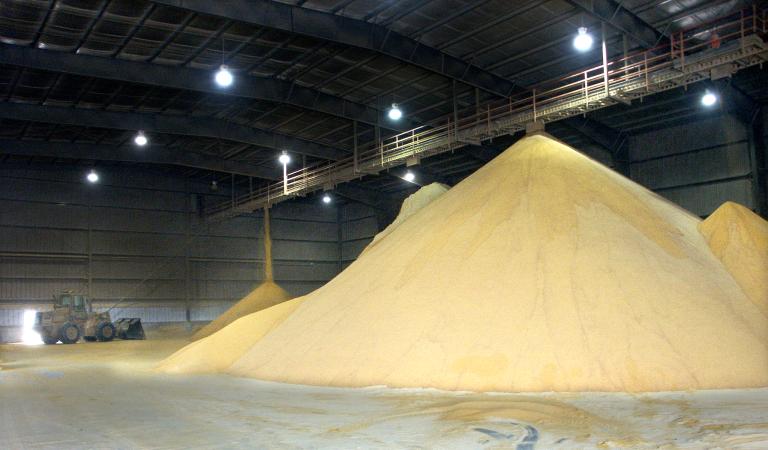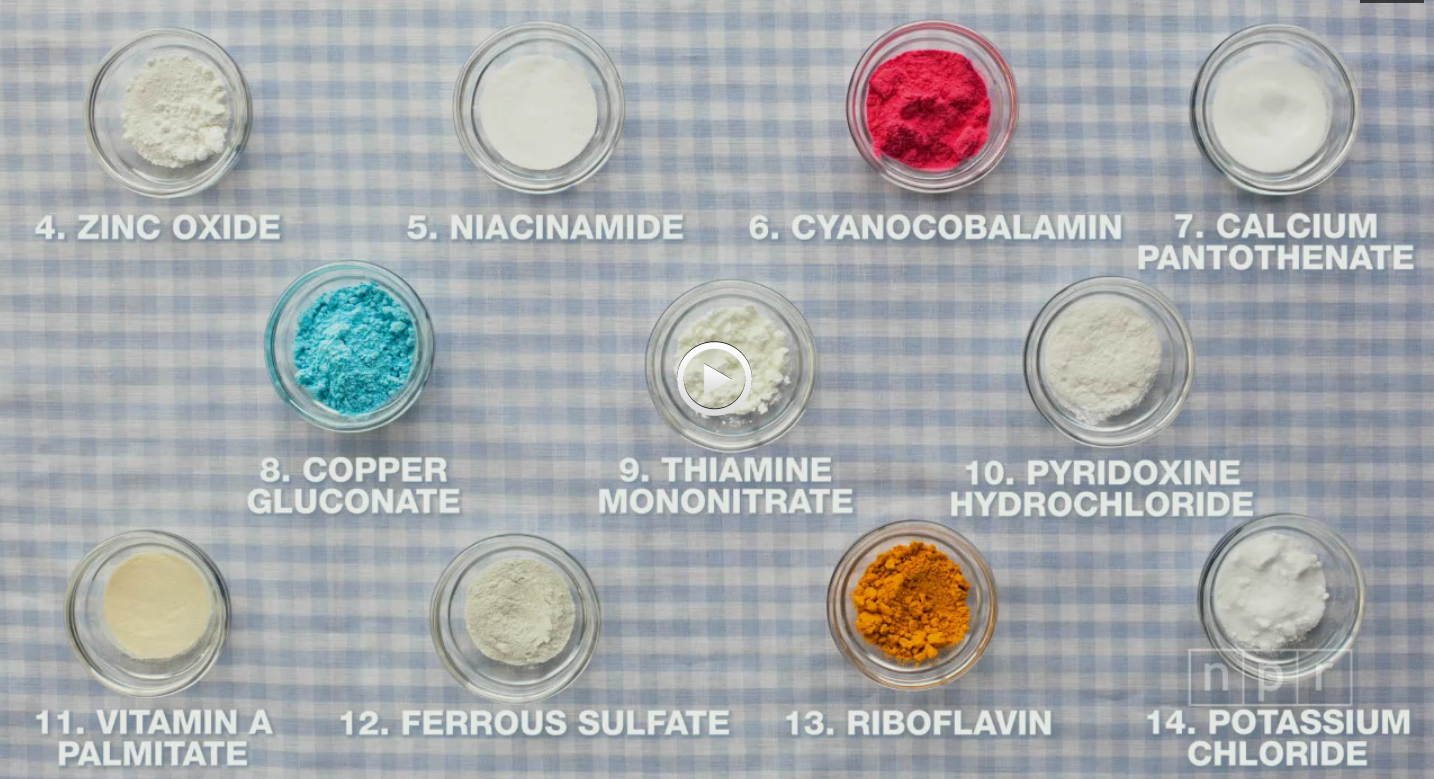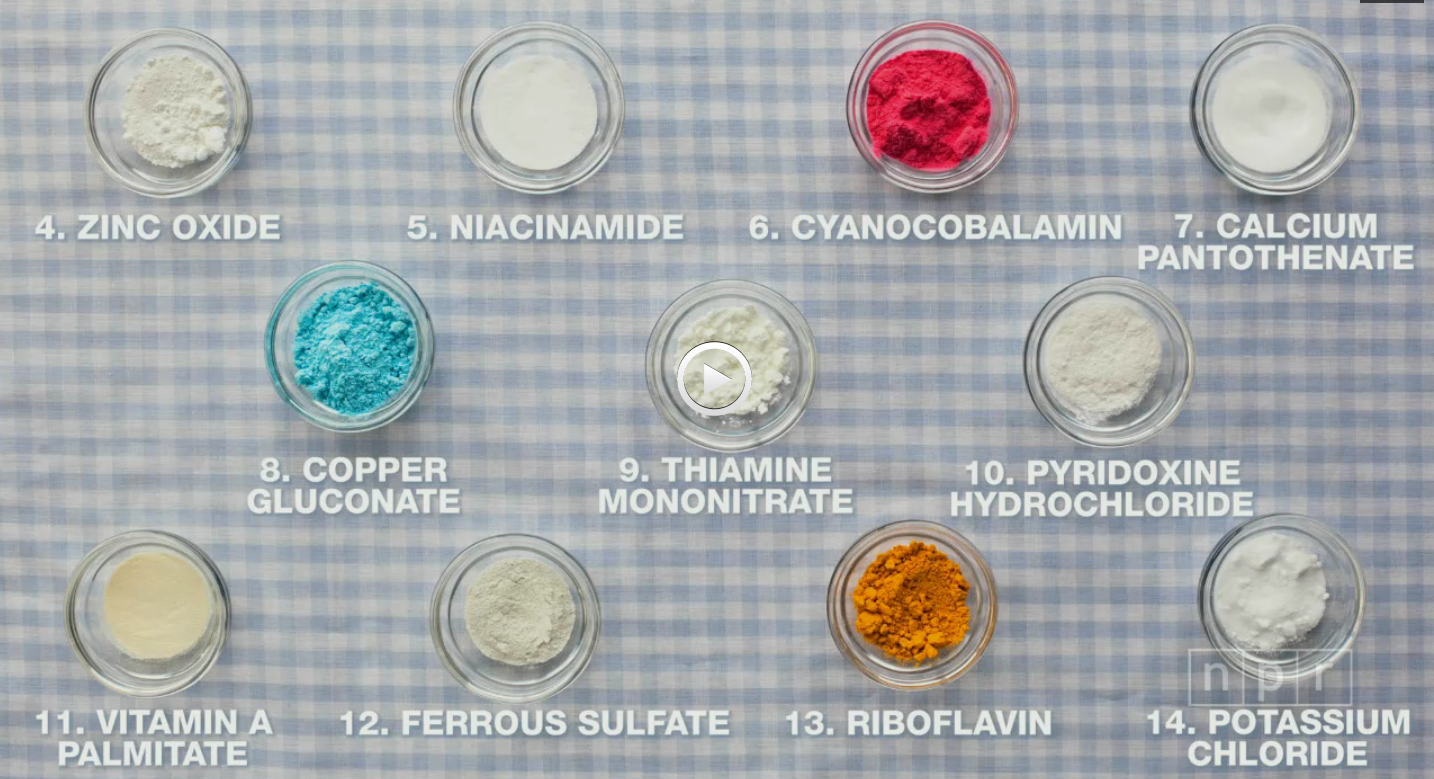What will you see when NPR’s Tiny Desk Kitchen takes you inside a school lunch burger patty? Some pretty startling colors — blue copper gluconate, red cyanocobalamin — and some 10-dollar names like thiamine mononitrate and pyridoxine hydrochloride.
And then there’s the stuff that tries to cover up the burger’s artificiality. Caramel color, for instance, makes the burger look like it’s been grilled when it really hasn’t. Yeast makes the meat taste more meaty, and the spices, flavorings, and sweeteners (!?) aren’t just there to enhance the flavor of the meat. They’re there to mask the bitterness of the added “enrichment” chemicals.
In the video, NPR host Allison Aubrey talks to a food scientist, who tries to justify this hideous progeny of a real hamburger and a Flintstones vitamin. For kids who don’t get enough nutritious food at home, the scientist points out, sneaking extra nutrients and protein into their school lunch might be the way to keep them healthy. But that doesn’t explain the disodium inosinate, an MSG-like “flavor enhancer.”
Fairfax County schools, source of the particular burger Aubrey dissected, is phasing them out in favor of something a little closer to natural. But some of the same ingredients crop up in processed foods you might buy at the store. Unlike kids in school, though, you can choose not to purchase them.





